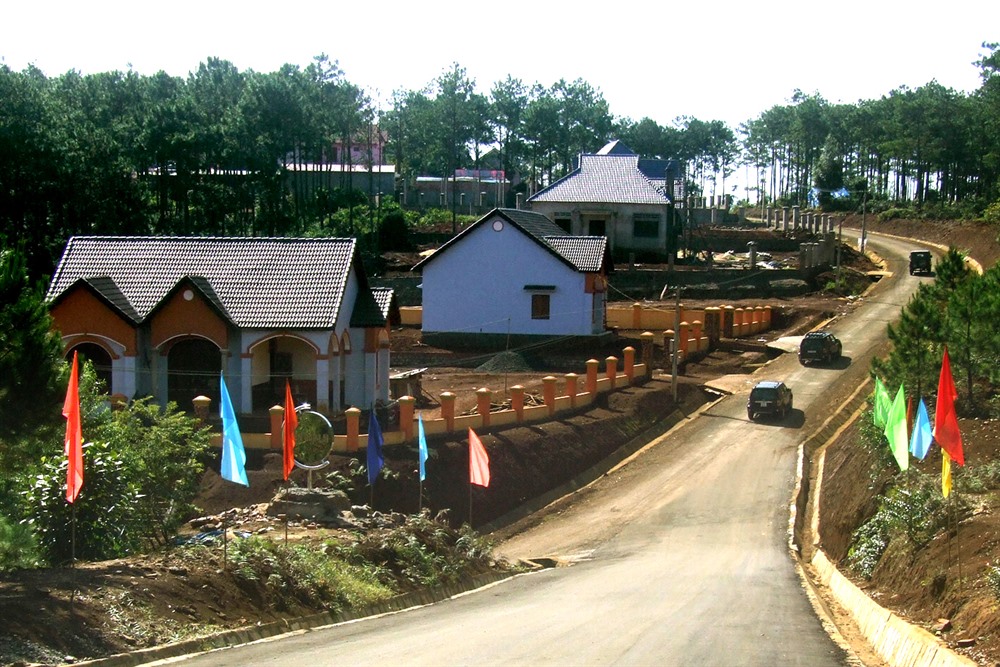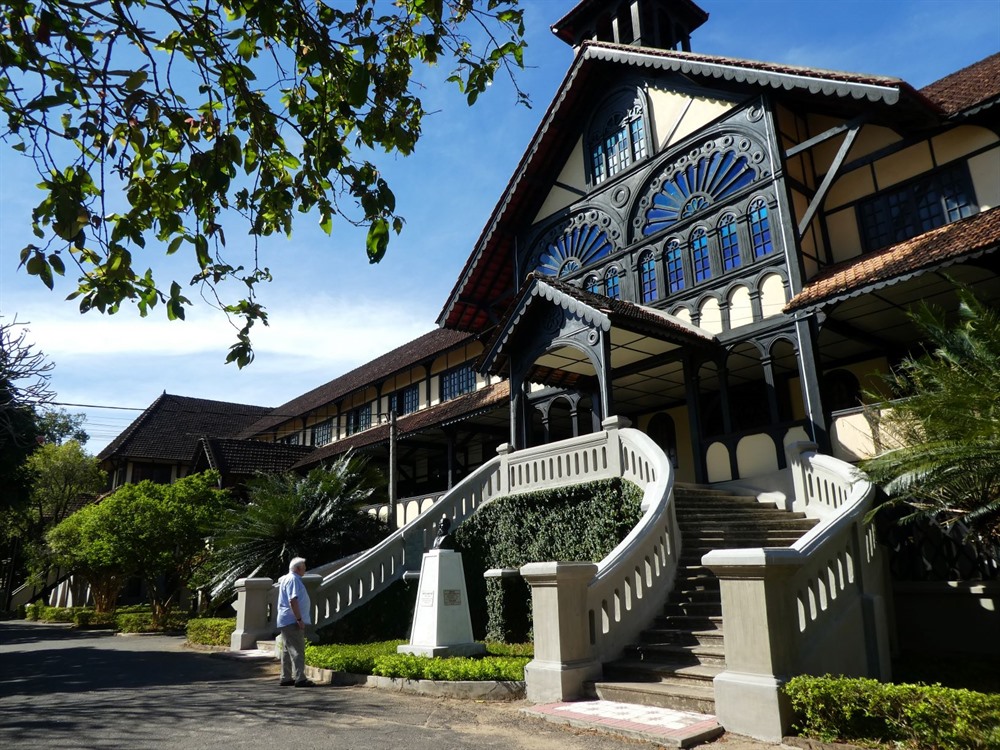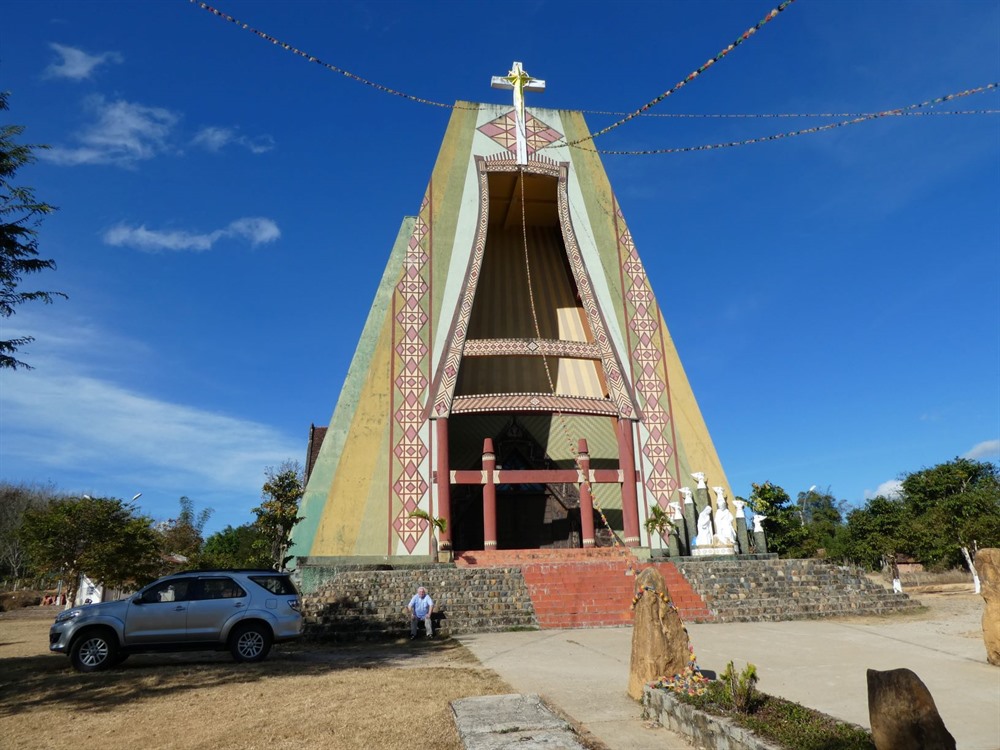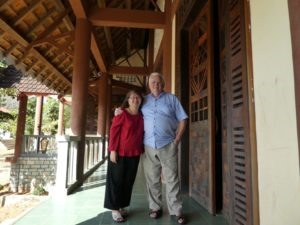 Life & Style
Life & Style

Việt Nam really is a wonderful country to travel, with unique culture to experience from north to south. I think those lucky enough to have visited magnificent sites around the world will agree with me that Kon Tum is one of the most special.
 |
| Villas at Măng Đen ecotourist site in Kon Plong District, Kon Tum Province. VNA/VNS Photo Trần Lê Lâm |
Mathilde Tuyet Tran
My recent journey to Kon Tum in the Central Highlands of Việt Nam was impressive.
Việt Nam really is a wonderful country to travel, with unique culture to experience from north to south. I think those lucky enough to have visited magnificent sites around the world will agree with me that Kon Tum is one of the most special.
The French recognised the charm of the region in the mid of 17th century after coming to the country. They wrote many books about prosperous life of the Vietnamese in the 18th century.
I learnt about the region through historical books, but reading about it did not come close to seeing it in person.
Kon Tum is the name of a village of the Ba Na ethnic minority group. In their language, “Kon” means “village” and “Tum” means “lake”, so Kon Tum means the Lake Village. It’s called that because it’s located on the banks of a big lake near Dak Bla River.
Situated in the northernmost province of the Central Highlands, west of Trường Sơn mountain range, the province shares a 142.4 kilometre-long border with Laos and a 138.3 kilometre border with Cambodia.
Elevation of most of the province’s 9,674.2 square kilometers of area ranges between 500 and 1,200 metres above sea level. Ngọc Linh Mountain is the highest in the province at 2,596m. The temperature at this time of year is moderate on average – around 17 or 18 Celsius – but varies greatly by elevation and time of day. The province has a population of 507,800, most of whom are Catholic and Protestant, and is rich in minerals and rare wildlife.
I arrived at 11am. The blue sky was clear above with no clouds. The stilt houses were nestled peacefully on the mountainside next to the winding, foggy roads.
After a quick lunch – which was delicious and cheap at just about 8 or 9 euros (US$10) for two – the driver said he had a surprise for us.
He brought us to the Wooden Church (or Kon Tum Church). It was amazing. I’ve visited Phát Diệm Church in Nam Định Province, but this was even more impressive. I could feel the blending of the culture and architecture of France and Việt Nam.
Built by French priests and finished in 1918, the church exudes a wild and imposing beauty. It’s quiet and peaceful here, the only movement leaves blowing in the wind.
My husband wanted to go into the church but all the doors were closed. As a Catholic, be said he believed a door would open to help him come in and see God. And he’s right – even though there was nobody there, we found an open door.
The church was built on stakes one metre off the ground to prevent dampness and mould. It’s hot outside, but cool inside.
The building adopts specific aspects of local culture from the nhà rông (communal house, where many important events of the tribes take place), including wooden statues and carves patterns.
Next we visited Bishop’s Palace, which was built between 1935 and 1938 by Martial Pierre Jannin Phước.
The romantic lane to the palace was lined with old frangipani trees, ripe with light pink flowers. I imagined a bride and groom hand-in-hand strolling down a flower road in their wedding ceremony.
In my imagination, Kon Tum had only old stilt houses. In truth, it’s much more interesting than that.
The driver then took us to Măng Đen pine forest to the north. The green of the forest and the fresh, cool air reminded me of my late father. He used to come to the Central Highlands to hunting, and brought us back many things like rượu cần (wine drunk out of a jar through pipes), deer jerky and tanned leather. I still keep a wallet made of tanned leather from one of his hunting trips; it now rests solemnly on his altar.
It took us about two hours from the forest to majestic Pa Sỹ Waterfall. The 45m-high waterfall is tucked away in a lush valley in Kon Tu Rằng Village, Măng Cảnh Commune, Kon Plong District.
The path from the top of the waterfall down to its base was treacherous – I gave up as soon as I saw the uneven stones and the steep drop off the side. My husband was not deterred, so he climbed down to take a picture for me.
After rushing around all day, we were exhausted and decided to end our journey. We promised to return to experience the culture of the area’s ethnic peoples.
If you are interested in discovering Việt Nam’s Highlands, enjoying pristine beauty and learning more about the customs of ethnic people, there’s nothing better than a visit to Kon Tum. I recommend you learn from our mistake – set aside at least two days to see this unique and beautiful place. — VNS
 |
| The Bishop’s Palace, built between 1935 and 1938, was established by Martial Pierre Jannin Phước. VNS Photos Mathilde Tuyet Tran |
 |
| The Wooden Church, or Kon Tum Church, should be on every visitor’s list. |
 |
| A typical nhà rông (communal house) in the province. |
 |
| Writer Mathilde Tuyet Tran (left) and her husband on their visit to Kon Tum Province. |




